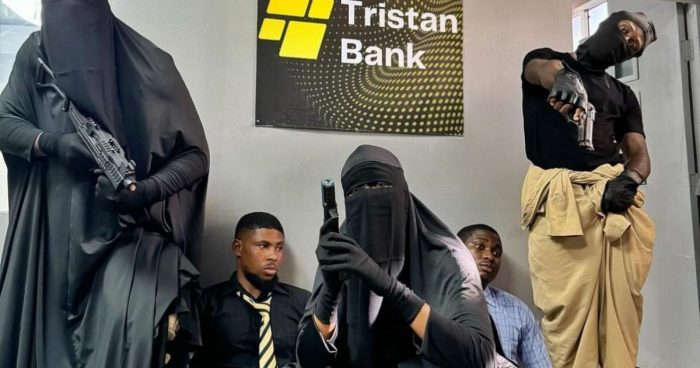Religious outfits have sparked controversy, leading the Muslim Rights Concern (MURIC) to urge the National Film and Video Censors Board to impose an immediate ban on an upcoming movie featuring actress Nancy Isime.
In the film, Nancy Isime is depicted wearing an Islamic full covering, known as the niqab, while carrying dangerous weapons.

This movie has sparked a broader conversation about how media portrayals of religious outfits can influence public perception.
Historical Significance
Religious outfits, such as the niqab, hold profound cultural and spiritual significance for many communities.
The niqab, a veil that covers the face, leaving only the eyes visible, is worn by some Muslim women as an expression of their faith and commitment to modesty.
Historically, these garments have been misunderstood and misrepresented, often depicted in ways that do not accurately reflect their true meaning and importance.
Public Perception
The media plays a crucial role in shaping public perception.
Films, television shows, and news outlets often serve as primary sources of information about different cultures and religious practices.
When these platforms portray religious outfits inaccurately or negatively, they contribute to the spread of stereotypes and misconceptions.
Furthermore, as noted by MURIC, depicting niqab-clad characters as criminals or extremists can reinforce harmful biases against Muslim women.
Misconceptions
The controversy surrounding Nancy Isime’s upcoming movie illustrates the potential consequences of negative media portrayals.
MURIC’s call for a ban highlights concerns that the film could incite public sentiment against Muslim women by depicting them as violent criminals.
Perceptions that spread beyond the confines of cinema can result from inaccurate depictions of religious attire.
Viewers’ views and actions are influenced when they see specific groups portrayed in media on a regular basis because these representations become embedded in their thoughts.
People Also Read :August 1: Three Possible Outcomes If Oro Worshippers Encounter Protesters
It is imperative for the media to approach religious depictions with sensitivity and accuracy.
Also, media recognizes their power to influence societal attitudes.

